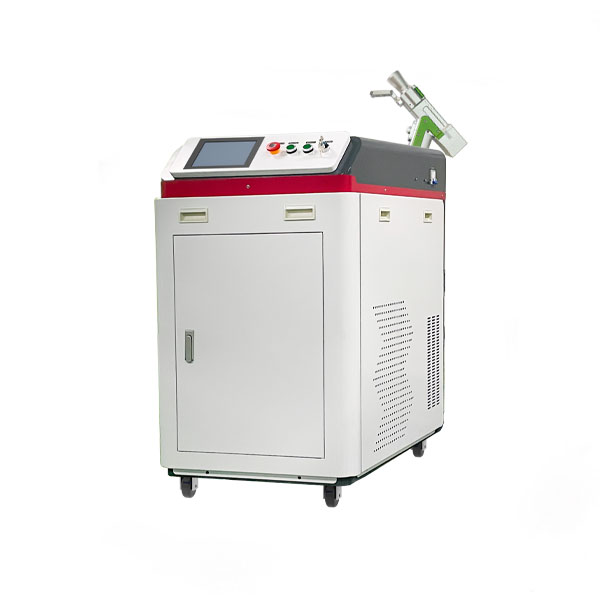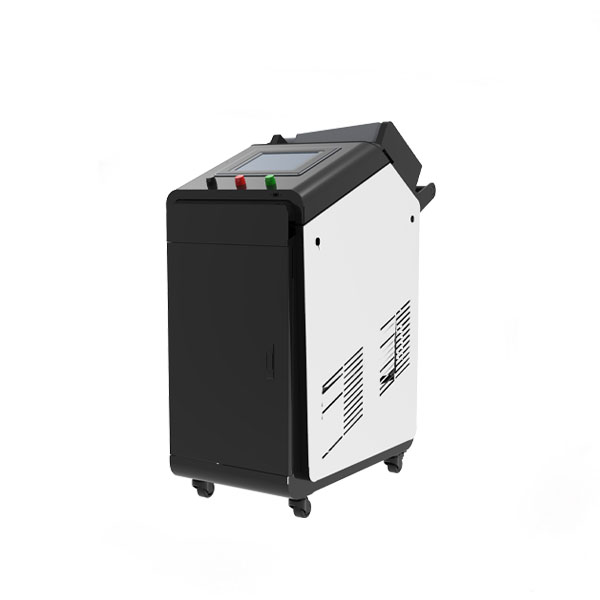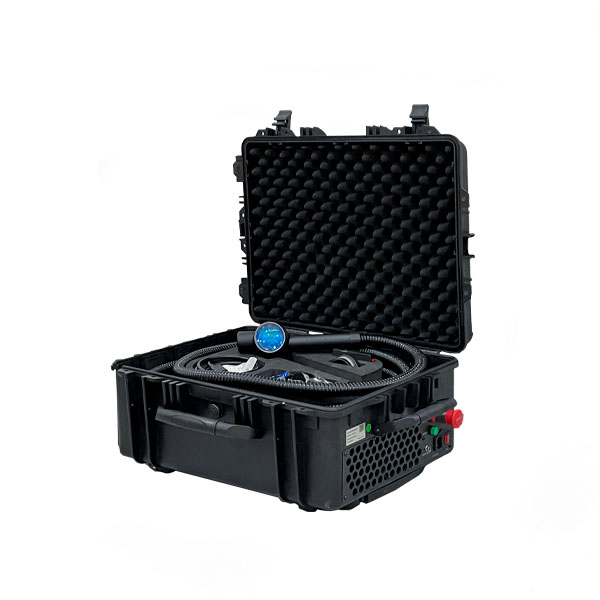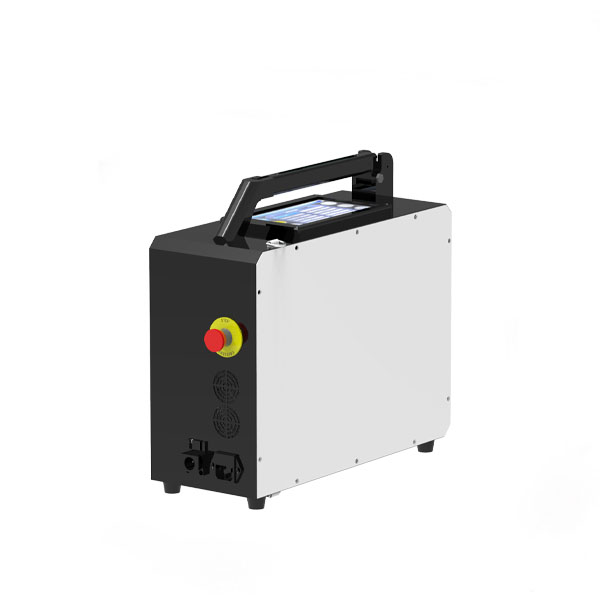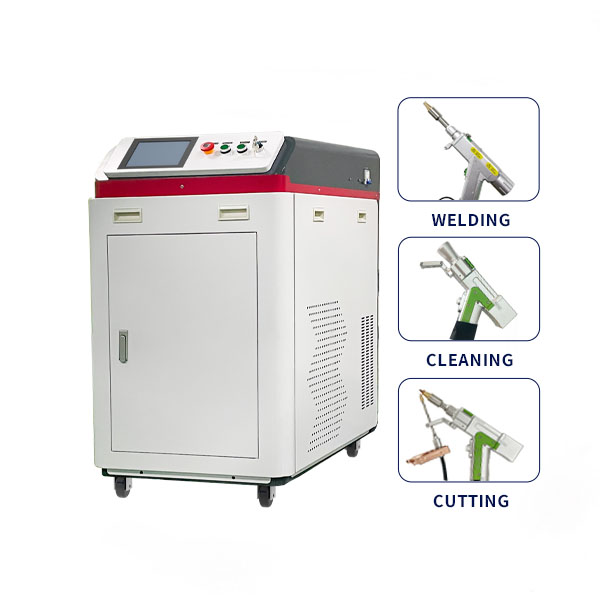Laser cleaner for removing surface contaminants such as rust, paint, oil, grease, coatings and other stains

Laser Cleaning Machine
Fiber Laser Cleaning Machine
Laser cleaning machine refers to the use of high-energy laser beam irradiation of the surface of the workpiece, so that the surface of the dirt, rust or coating instantaneous evaporation or peeling off, effective high-speed removal of adhesion on the surface of the cleaning material or surface coating, to achieve the effect of cleaning the surface.
Advantage
High Accuracy: Laser cleaners remove dirt, rust and other contaminants with high accuracy and minimal damage to the underlying surface.
Non-Contact Cleaning: Laser cleaners use a focused beam of light to remove contaminants without the need for physical contact and reduce the risk of damage to the surface being cleaned.
Environmentally Friendly: Laser cleaners use no chemicals or abrasives, making them an environmentally friendly alternative to traditional cleaning methods.
Versatile: Laser cleaners can be used on a wide range of surfaces, including metals, plastics, glass and ceramics.
Time Saving: Laser cleaners remove contaminants quickly and efficiently, saving time and labor compared to traditional cleaning methods.
Cost-effective: Laser cleaners can be a cost-effective alternative to traditional cleaning methods, especially for large areas and heavy-duty cleaning tasks.
Laser Cleaner Applications
Fiber laser cleaner is not only a laser rust removal tool, but also can be used for laser paint removal, laser degreasing, laser oxide layer removal, laser screw cleaning, laser rust removal, laser weld cleaning.
It is applied in shipbuilding industry, automobile parts, rubber mold, high-end machine tool, tire mold, rail, environmental protection industry and other industries.
Laser cleaning is highly versatile and can effectively clean a wide range of materials.
1. Metals (Ferrous & Non-Ferrous)
- Steel (Carbon Steel, Stainless Steel, Tool Steel, etc.) – Removes rust, paint, oil, and coatings.
- Aluminum & Aluminum Alloys – Cleans oxides, anodized layers, and contaminants.
- Copper & Brass – Removes oxidation, solder residues, and corrosion.
- Titanium & Titanium Alloys – Used in aerospace and medical industries for high-precision cleaning.
- Gold, Silver, & Other Precious Metals – Cleans oxidation layers without damage, used in jewelry restoration.
- Cast Iron – Removes scale, rust, and contaminants from industrial components.
2. Plastics & Polymers
- ABS, PC, PVC, PE, PP, and Other Engineering Plastics – Removes coatings, ink markings, and contaminants.
- Rubber & Silicone – Cleans mold residues and surface contaminants in manufacturing.
3. Stone & Concrete
- Marble, Granite, Limestone – Used in historical restoration, graffiti removal, and monument cleaning.
- Concrete & Brick – Removes paint, soot, and pollution deposits.
4. Glass & Ceramics
- Industrial Glass & Optical Glass – Removes coatings, stains, and oxidation without damaging transparency.
- Ceramics & Porcelain – Cleans dirt, oxidation, and surface contaminants.
5. Wood & Organic Materials
- Hardwood & Softwood – Used for paint, varnish, and contamination removal in restoration.
- Leather & Textiles – Used for precise cleaning in manufacturing without damage.
Common Applications of Laser Cleaning
- Rust Removal – Automotive, aerospace, shipbuilding, and machinery industries.
- Paint & Coating Removal – Metal fabrication, restoration, and pre-treatment for welding.
- Oxide & Contamination Cleaning – Semiconductor, electronics, and precision industries.
- Mold Cleaning – Plastic, rubber, and injection mold industries.
- Historical Restoration – Monuments, artifacts, and ancient structures.
Laser cleaning is non-contact, eco-friendly, and highly efficient, making it an ideal choice for multiple industries and materials.
Laser cleaning is a non-contact cleaning technology that utilizes high-energy pulsed laser beams to irradiate the surface of a workpiece, effectively removing contaminants, oxides, or coatings. The working principle mainly relies on the following physical effects:
1. Laser Ablation
When a high-energy laser beam irradiates the contamination or oxidation layer, the surface absorbs the laser energy, causing the contaminants to rapidly evaporate, sublimate, or be shattered and removed from the substrate surface.
- Applicable Materials: Metals, stone, glass, ceramics, and other hard materials with rust, coatings, and dirt.
2. Thermal Expansion Effect
The contaminant layer and the substrate absorb laser energy differently. The contaminant layer expands when heated, whereas the substrate expands less, leading to microcracks at the interface, which causes the contaminant layer to detach from the substrate.
- Applicable for: Removing oil stains, oxidation layers, and plating from metal surfaces.
3. Photodecomposition & Photon Pressure Effect
Short-pulsed laser energy breaks molecular bonds in the contaminant layer while photon pressure blows away contaminant particles.
- Applicable for: Precision cleaning, such as electronic components, semiconductor wafers, and artifact restoration.
4. Laser Shock Wave Effect
High-energy laser beams generate a plasma explosion on the contamination layer, creating a shock wave that removes contaminants via mechanical force.
- Applicable for: Large-scale cleaning, such as paint removal from ships and decontamination in aerospace applications.
5. Plasma-Induced Ablation
When a laser interacts with a contaminant layer, plasma is generated on its surface. The expansion of the plasma creates a force that removes the contamination layer while minimizing damage to the substrate.
- Applicable for: Removing oxides or contaminants from sensitive materials, such as medical devices and semiconductor wafers.


| Laser Type | CW Fiber Laser | Pulsed Fiber Laser |
| Laser Power | 1000-3000W | 50-500W |
| Harm to Material | Nearly Zero | Zero |
| Cooling Method | Water Cooled | Air Cooled |
| Weight | >280KGS | >120KGS |
| Machine Cost | 6000USD-10000USD | 4300-50000USD |

